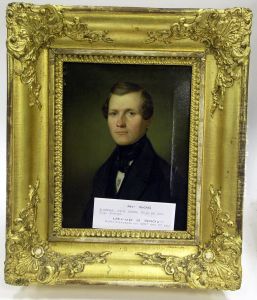Nils Johan Olson Blommer Paintings
Nils Johan Olson Blommer, a notable figure in Swedish art history, was born in 1816 in Stockholm, Sweden. He emerged as a prominent artist during the mid-19th century, a period that was rich in artistic evolution across Europe. Blommer's work is often associated with the Romantic movement, which emphasized emotion, individualism, and a reverence for the natural world. His contributions to Swedish art are particularly remembered for their mystic and romantic portrayal of Norse mythology, folklore, and the Scandinavian landscape.
Blommer's educational journey in the arts began at the Royal Swedish Academy of Arts in Stockholm, where he honed his skills and developed his unique style. His talent was recognized early on, and he quickly established himself as a key figure in the Swedish art scene. Blommer's fascination with Norse mythology and Swedish folklore became the central themes of his oeuvre, setting him apart from his contemporaries. His paintings are characterized by their vivid depiction of mythical beings, heroes, and landscapes, imbued with a romantic and sometimes ethereal quality.
Throughout his career, Blommer's work received considerable acclaim, both in Sweden and internationally. He participated in various exhibitions, and his paintings were sought after by collectors and art enthusiasts alike. Despite his success, Blommer's life was cut short when he died in 1853, at the age of 37. Though his career was brief, his impact on Swedish art was profound. He left behind a legacy that continued to inspire artists and captivate audiences for generations. Blommer is remembered not only for his artistic talent but also for his contribution to the cultural heritage of Sweden, through his evocative portrayals of its myths, legends, and natural beauty.


